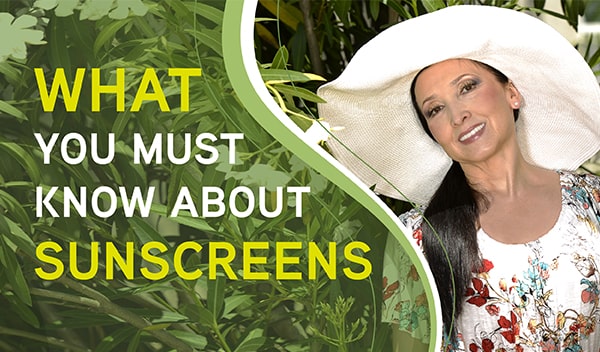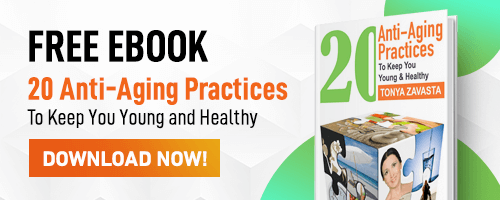What You Must Know About Sunscreens
Published: (July, 2022)


1. What Is in Your Sunscreen?
Once, SPF factors like 15 were bandied about. Now, it’s numbers 50, 65, 75, 85, and higher. What’s more, packaging directions bear instructions such as “Apply liberally,” “Spread as thickly as desired,” “Use as often as you wish,” and similar phrasings.
Lay it on heavy, we’re told. And, virtually speaking, we’re instructed that we shouldn’t so much as take the trash out without first slathering on a quarter-inch coating of sunscreen.
With all this urging to rub stuff on so often, so liberally, you’d think we know an awful lot about what’s in sunscreen and what its effects are, wouldn’t you? But do we, really?
In the USA, the relevant government agency, so far as safety is concerned, is the Food and Drug Administration (FDA). Says the FDA, we do know a fair bit about two vital ingredients in sunscreen—zinc oxide and titanium dioxide—and they’re safe in the quantities in which we find them in the sunscreens sold today. Whew! So far, so good.
But as to a dozen more common ingredients, the FDA admits, we just don’t know enough. Two ingredients with high toxicity concerns find very widespread use in US-distributed sunscreens: oxybenzone and octinoxate. Research shows “insufficient data” to determine the nature and extent of their influence through absorption via sunscreen.

Coral Reef Bleaching and Sunscreen
Other studies, involving these two ingredients, have been causing a lot of concern.
According to research (International Coral Reef Initiative, 2018), one of the main causes of coral bleaching is sunscreen. And here, the main culprits are the same: oxybenzone and octinoxate (NCBI, 2018), two compounds found in most sunscreens.
In fact, these commercial sunscreens are the third-biggest cause of coral bleaching. Through this process, corals reject their symbiotic organisms and lose their color. The rejection of these organisms also weakens corals, making them more prone to contracting viral infections and dying.
Tons of sunscreen are washed into the reef areas annually. The negative effects can be devastating. This is why the world's most popular snorkeling destinations have started to ban sunscreens containing the harmful chemicals. And if these ingredients are harming the coral reefs, you can be sure they are not good for you either. But the possible harm to humans doesn’t stop with these two.

UV Filters
UV filters of more moderate toxicity concern include homosalate, octisalate, octocrylene, avobenzone, and mexoryl SX. Of these, avobenzone and octocrylene either directly cause high rates of skin allergy or have breakdown products that do.
Many of the risks associated with the absorption of UV inhibitors and other chemicals through the skin from sunscreen concern the thyroid and reproductive systems. Estrogen and testosterone levels, in particular, may be affected. Again, the FDA states that there is “insufficient data” to determine risks and safety levels.
Research is difficult because so many factors may be involved at one time: age, pre-existing health conditions, environmental conditions, gender, activity, quantities and kinds of sunscreen and other chemicals used, and, naturally, diet. So, you see, it’s up to you to assure your own safety. My own ultra-simple, low-tech advice: Try a hat.
No chemistry degree required. No fine print to read. They’re not FDA-approved. But, then, they don’t need to be. Get one with a wide brim. Just make sure it fits. Make sure you like it. And stick it on. Out you go for your walk.
If you do use a sunscreen, choose a sunscreen. Read labels. Try whenever you can to use a hat or a jacket instead of rubbing chemical sunscreen on.

2. Get an Internal Sunscreen
In my experience, sun exposure is crucial for your success on raw foods. For healthy bones and muscles, it’s a must.
Doing one thing wrong—like eating cooked food—forces you to do another—covering yourself with sunscreen. The sun exposes your diet. Fry, grill, and bake your food, and these burnt offerings will show up on your skin. More in my book Quantum Eating: The Ultimate Elixir of Youth.
Keep this in mind…When you eat plenty of fresh fruits, vegetables juices and green smoothies, your body develops a light, natural tan.
This, in turn, gives you an “internal sunscreen.” Natural sunlight on your skin gives your body the materials it needs to produce its own Vitamin D—not technically a vitamin at all but a hormone needed for healthy teeth and bones, and for a healthy immune system. Eating plenty of fresh fruits and vegetables, nuts and seeds (especially young coconuts and their water) helps your skin adjust to sun exposure.
Studies noted in the books Light Medicine and The Healing Sun are also starting to show that sunlight—in moderation—is both healthful and necessary to human wellbeing. Once again, the benefits, we’re told, outweigh the hazards. It may actually be, some scientists speculate, that more people die from the lack of proper sun exposure than are felled by too much sun. More in my article: Sunblock…How Much Sun Protection Do You Really Need?

3. NEW in our store!
Veinice vein-concealing cream is our latest product. Veinice Cream for Legs is a meticulously blended formula with unique qualities. Its active ingredients are known to reduce the appearance of varicose and spidery veins and to aid in developing a beautiful tan.
As a bonus, Veinice will also help those looking for a mild, irritation-free moisturizer.
Is this a “miracle” cream? Of course not. I have gathered in this formula many deluxe oil components—the oils of the horse chestnut, turmeric, arnica, ginger, calendula, and blue yarrow oil, all known for countering varicose veins and spider veins. Still, I believe that raw foods, daily juicing, regular exercise, and gentle cupping massage are the main factors in dealing with unsightly veins.
In my late thirties, when I was eating a standard cooked-food menu, I had a few bulging veins. Now…none. No spider veins, either. I’ll admit, though, that now, at age 64, I do have a few veins on my legs more visible than I want them to be. So, this cream, Veinice, is my answer. As always, I only offer the products that I'm using myself. I do hope you’ll like this latest addition to our line.
